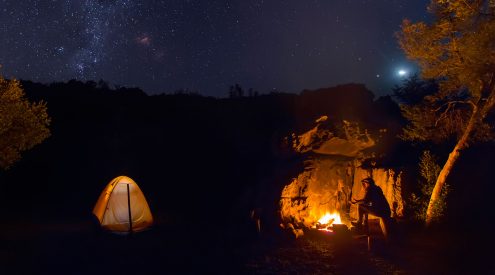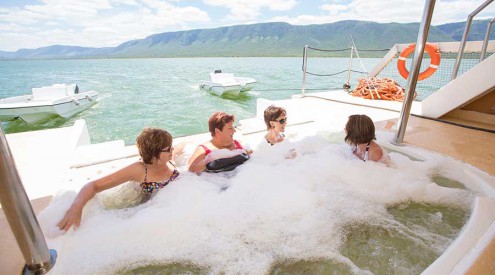I’m in the Kruger National Park on assignment for Getaway visiting all the campsites, lodges and accommodation options in the park. By the end of it I’ll have a list of all them and, more importantly, an idea of what you can expect to find there in terms of accommodation, food, amenities, animals, mobile reception and highlights. (Read all my reviews here: Kruger Accommodation) After making my way from the very south, reviewing camps like Biyamiti Bushveld Camp, Berg-en-Dal Rest Camp, Skukuza Rest Camp, Letaba Rest Camp, Satara Rest Camp and Bateleur Bushveld Camp, I finally made it through to the northern tip! Here are the details of my last stop – the tiny Punda Maria Rest Camp.
Punda Maria Rest Camp
Being the northernmost outpost of the Kruger National Park, Punda Maria Rest Camp seems to serve as a first or a last stop for many visitors. But don’t let this turn your stay at this intimate camp into an overnight one, because there are two things that make Punda Maria entirely unique – the accommodation is different from all the other camps and so is the vegetation surrounding the camp.
The accommodation at Punda Maria Rest Camp
The two-sleeper bungalows at Punda Maria are much more social than what you’ll find at the other camps, as three rooms form part of one unit, meaning that you’re sharing your long front porch with two other couples. These two-sleepers have their own bathrooms, but only a fridge and a kettle in the form of kitchen facilities, so all your meal preparing and eating happens on the porch or at the communal kitchens. The three-sleeper bungalows each have a full kitchen inside while the family cottage sleeps six and has a full kitchen, lounge and everything else associated with a holiday home.
The camping area is quite far removed from the rest of the camp, but this is a good thing as it’s much closer to the swimming pool than the bungalows. Some of the spots have electricity and some don’t, so make sure you specify when booking. The safari tents are found at the far end of the camp, and because the only people who really go up there are the ones who stay there, they’re quiet and secluded. Each safari tent sleeps two and has a full kitchen.
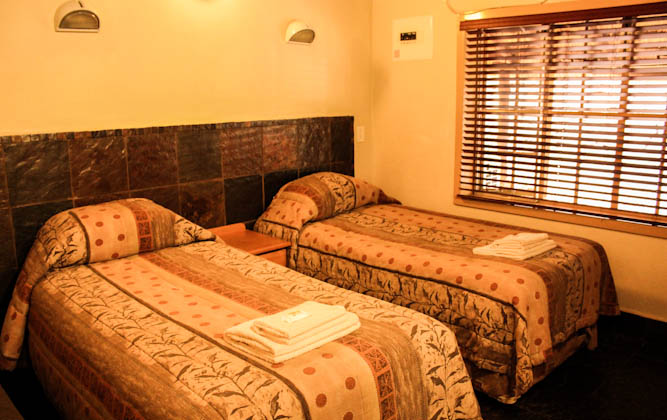
The two-sleeper bungalows are small on the inside, but they have everything you need for a comfortable stay.
The best spots
The bungalows are much the same and none of them run along the fence. Your only choice is between being in the first row of units (along the main road running into and out of the camp) or being in the second row (looking into the back of the first row). Units 1-12 are at the bottom while units 13-22 are at the top.
In that camping area you can choose where you park when you arrive (after checking in at reception) and here you can pick a spot along the fence, close to the bird hide or closer to the pool.
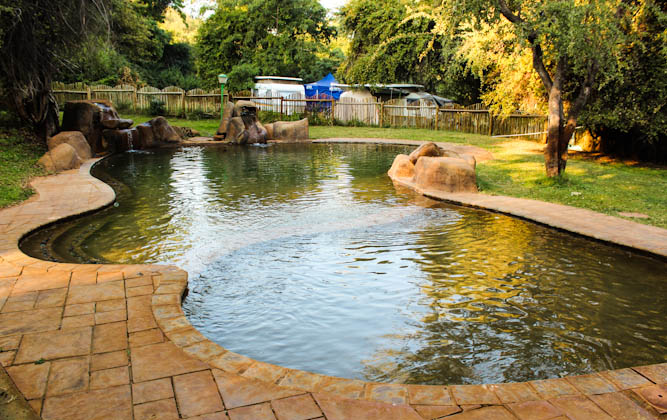
The entrance to the swimming pool is from the campsite, a convenient change for campers.
The animals
The area surrounding Punda Maria is good for seeing elephant, impala, zebra and giraffe. The more sought after animals are, of course, leopard and lion. You sometimes hear the lions at night and this will be your cue to go out early in the morning and look for them. The vegetation in this area is great for leopards, seeing as it’s hilly and rocky, so you should always be on sharp lookout for these elusive creatures. The shrub Mopani plains are home to rare game such as roan and tsessebe.
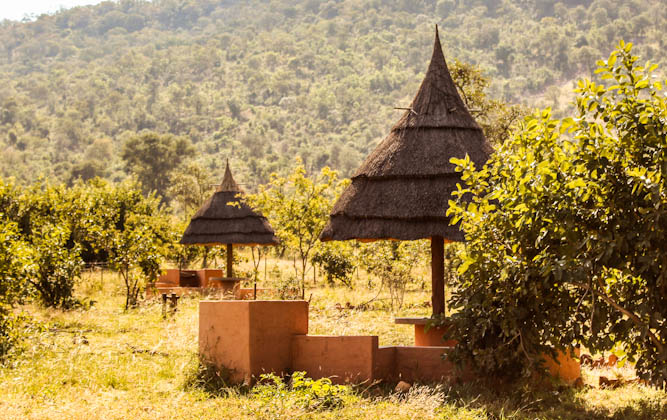
Punda Maria Rest Camp day visitors picnic site and environmental education centre is found about 5km outside the rest camp, just before you reach the Punda Maria Gate. There is no place for day visitors inside the rest camp itself.
The food
The restaurant at Punda Maria is very small, but it has the exact same menu as at the majority of the camps, so you can sit either inside or outside and enjoy one of the meals here. The shop is rather small, but you’ll be able to buy the necessary items to through on the braai or cook in the kitchen (if you have one).
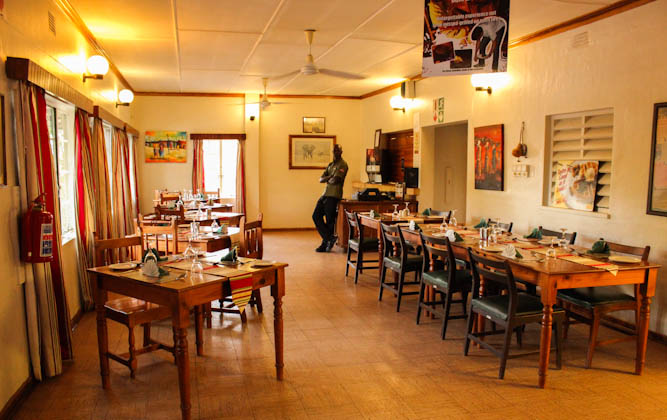
The inside of Punda Maria's restaurant. When I visited the restaurant's card machine didn't work, so perhaps ensure that you have some cash on you.
Highlights
Punda Maria Rest Camp has its own bird hide inside the camp – a feature you only really find at the more private bushveld camps. The hide sits at the lower fence, inside the camping area.
The vegetation surrounding Punda Maria is very unique. This is the Pafuri region of the park and has both the highest and lowest rainfall in the entire Kruger National Park. You’ll therefore see very unique sandstone hills in the area surrounding the camp.
After the characteristically flat areas of the north, you can look forward to lots of beautiful trees around Punda Maria. You’ll find some of the tallest Mopani trees in these parts and also pod-mahogany trees, mustard-trees and nyala trees.
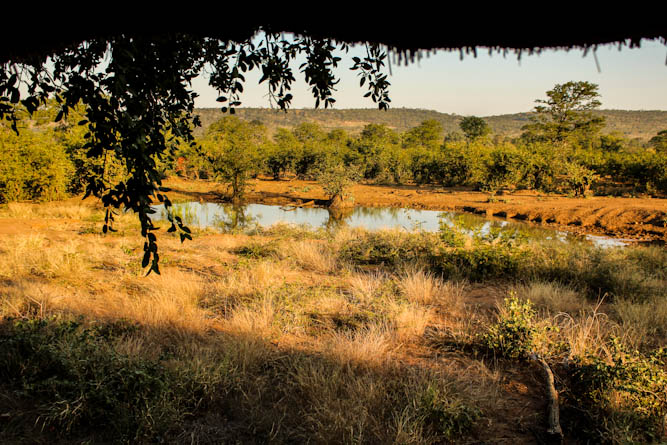
The view from the bird hide just at the start of the dry season.
Getting there
Punda Maria is very accessible, being only 5km from the Punda Maria Gate. This is almost at the northern tip of the park, so your closest town driving out would be Makhado (Louis Trichardt) about 170km out.
Nitty gritty
ATMs: No
Credit card facilities: Yes
Mobile reception: Not perfect, but good enough to make calls and send texts.
Book a stay at Punda Maria Rest Camp
Find more accommodation in Kruger









